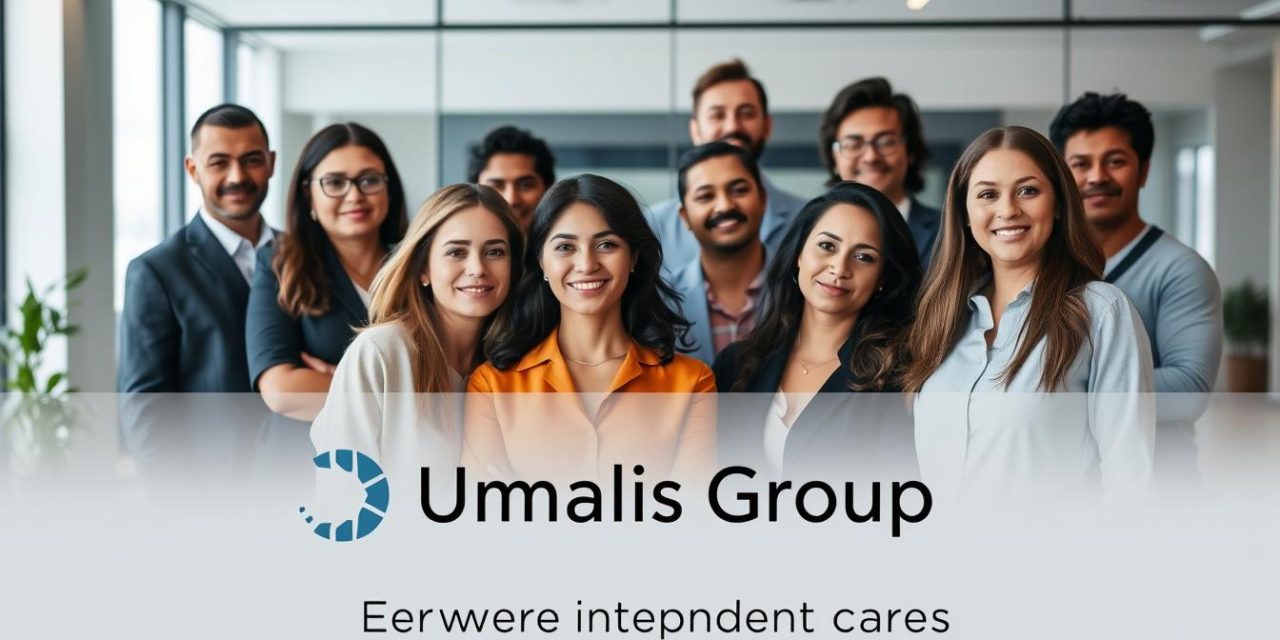As an independent professional, understanding your target audience is crucial for the success of your career. According to a Zendesk report, 68 percent of consumers expect personalized experiences. But how can you deliver that if you don’t know who you’re catering to? The answer lies in identifying and understanding those who are most likely to need your services.
audience allows you to tailor your marketing efforts effectively, ensuring that your limited resources are maximized. In a world where $37 billion is wasted in ad spend every year on ads that fail to engage the target audience, getting to know your customers is more important than ever.
Table of Contents
Key Takeaways
- Understanding your target audience is foundational to a successful independent career.
- Identifying your audience helps in tailoring your services and communications effectively.
- Maximizing marketing efforts is crucial for independent professionals with limited resources.
- This guide will walk you through defining, understanding, and connecting with your ideal clients.
- Practical strategies will be explored to help you grow your independent career with purpose.
What Is a Target Audience and Why It Matters for Independent Professionals
Understanding your target audience is crucial for independent professionals to succeed in a competitive market. Your target audience refers to the specific group of consumers most likely to want your product or service.
Definition of Target Audience
A target audience is defined by various factors including age, gender, income, location, and interests. It is a subset of a target market, which is the broader group of consumers that a company aims to sell to. For independent professionals, identifying this audience is critical.
The Unique Challenges for Independent Careers
Independent professionals face unique challenges such as competing with larger companies, establishing credibility, and creating effective marketing strategies on limited budgets. Understanding your target audience helps in addressing these challenges by allowing for more precise marketing efforts.
Some of the key challenges include:
- Competing with bigger brands
- Establishing credibility without a large brand name
- Creating marketing strategies that are effective on a limited budget
By understanding their target audience, independent professionals can tailor their services to meet specific needs, thereby enhancing their competitiveness and potential for success.
The Different Types of Target Audiences You Should Know
To craft effective marketing strategies, independent professionals must first comprehend the distinct types of target audiences they aim to reach. Understanding these different categories allows for more nuanced and targeted approaches, enhancing the overall impact of marketing efforts.
Demographic-Based Audiences
Demographic-based audiences are categorized by objective characteristics such as age, gender, location, income level, and education. These characteristics provide a foundational understanding of who might need your services. For instance, a professional service aimed at retirees would focus on age demographics.
Psychographic Audiences
Psychographic audiences are grouped by their belief systems, values, interests, and lifestyle choices. This categorization goes beyond demographics, focusing on what influences potential clients’ decisions emotionally. For example, a service that aligns with environmental values would target audiences who prioritize sustainability.
Behavior-Based Audiences
Behavior-based audiences are defined by their interactions with your content, services, or similar offerings. This includes browsing habits, purchase history, and engagement patterns. Understanding these behaviors helps in tailoring marketing efforts to specific engagement levels.
Purchase Intention Audiences
Purchase intention audiences are categorized based on their stage in the buying journey. This ranges from those becoming aware of a need to those ready to make a purchase decision. For independent professionals, recognizing these stages is crucial for crafting messages that resonate with potential clients at various awareness levels.
For a clearer understanding, let’s examine a comparative analysis of these audience types:
| Audience Type | Characteristics | Marketing Focus |
|---|---|---|
| Demographic-Based | Age, Gender, Location, Income | Objective Characteristics |
| Psychographic | Values, Beliefs, Interests | Emotional Resonance |
| Behavior-Based | Browsing Habits, Purchase History | Engagement Patterns |
| Purchase Intention | Stage in Buying Journey | Awareness to Purchase Decision |
By understanding and leveraging these different types of target audiences, independent professionals can significantly enhance their marketing strategies. For more insights on finding clients online, visit this resource.
Key Benefits of Identifying Your Target Audience

For independent professionals, knowing your target audience is key to effective marketing and brand development. By understanding who your ideal clients are, you can tailor your efforts to meet their specific needs, leading to greater success in your business endeavors.
Increased ROI and Better Resource Allocation
Identifying your target audience delivers substantial benefits, starting with a significantly increased return on investment (ROI) for your marketing efforts. When you know exactly who you’re targeting, you can allocate your limited resources more effectively, focusing your time and budget on the platforms and strategies most likely to reach your ideal clients.
More Effective Communication and Messaging
Clear audience identification enables more effective communication, allowing you to craft messages that speak directly to the specific needs, pain points, and aspirations of potential clients. This tailored approach helps in building a stronger connection with your audience.
Standing Out in a Competitive Market
For independent professionals in competitive fields, a well-defined target audience helps you stand out by highlighting your unique value proposition to the specific segment you serve best. Understanding your target audience allows you to develop a distinctive brand voice that resonates with your ideal clients, creating recognition and preference in a crowded marketplace.
According to HubSpot, 82 percent of marketers say high-quality customer data is important to succeed in their roles. Moreover, segmentation can increase revenue by up to 760 percent. By focusing on your target audience, you can create more focused campaigns that generate higher conversion rates than generic approaches.
- Improved ROI through targeted marketing efforts
- More effective resource allocation
- Enhanced communication and messaging
- Standing out in a competitive market
How to Identify Your Target Audience as an Independent Professional
For independent professionals, pinpointing the right target audience is essential for maximizing their impact. Understanding who your ideal clients are allows you to tailor your services to meet their specific needs, thereby increasing your chances of success.
To start identifying your audience, it’s crucial to analyze your current client base. Those who have already chosen your services can reveal valuable patterns about who values your work most.
Analyzing Your Current Client Base
Gathering data on your existing clients is a fundamental step. This includes demographics, how they found you, what specific services they purchased, and what problems they were trying to solve. By examining this information, you can identify common characteristics among your clients.
For instance, you might discover that a significant portion of your clients are small business owners in a particular industry. This insight can help you refine your marketing efforts to target similar businesses.
Conducting Market Research on a Budget
Market research doesn’t have to be expensive. Independent professionals can utilize free or low-cost tools like Google Forms for surveys, social media polls, and industry forums to gather valuable insights. These tools can provide a wealth of information about your potential clients’ needs and preferences.
By engaging with your audience on social media or through email newsletters, you can also gather feedback that helps refine your understanding of your target audience.
Analyzing Competitors in Your Niche
Another effective strategy is to analyze your competitors. Observe who they’re targeting, what messaging they use, and where they might be leaving gaps that you can fill with your unique services. This competitive analysis can provide critical information about your shared target audience.
| Competitor | Target Audience | Messaging | Gaps in Service |
|---|---|---|---|
| Competitor A | Small businesses | Emphasis on cost-effectiveness | Lack of personalized service |
| Competitor B | Enterprises | Focus on scalability | Inflexibility in service offerings |
By understanding these dynamics, you can position your services more effectively to attract your ideal customer.
In conclusion, identifying your target audience involves a multi-faceted approach that includes analyzing your current client base, conducting market research, and analyzing competitors. By leveraging these strategies, independent professionals can gain a deeper understanding of their audience and tailor their services to meet their needs effectively.
Creating Detailed Audience Personas for Your Independent Business

Developing detailed audience personas is crucial for independent professionals to understand their target audience. By creating these personas, you can transform abstract target audience data into realistic representations of your ideal clients, making it easier to create services and communications that resonate with real people.
Essential Elements of an Effective Persona
An effective persona includes demographic details, professional background, goals and challenges, preferred communication channels, and decision-making factors specific to your services. For example, « Sarah, 42, marketing director at a mid-size company who needs help with content strategy but has limited time for implementation » is a more effective description than a vague outline of a marketing professional.
Tools for Creating Personas Without a Big Budget
Independent professionals can create meaningful personas without expensive software by using free templates, spreadsheets, and simple document formats. These tools allow you to capture the critical information needed to develop a comprehensive understanding of your target audience. By revisiting and refining your personas quarterly, you can ensure they accurately reflect your target audience.
Using Personas to Guide Your Business Decisions
Using personas to guide business decisions helps independent professionals maintain consistency in their marketing, service development, and client communications. Effective personas also help you anticipate client objections and concerns before they arise, allowing you to address them proactively in your marketing materials and sales conversations. For instance, understanding the goals and challenges of your personas can inform the development of your products and services, ensuring they meet the needs of your target audience.
Effective Ways to Reach Your Target Audience
In today’s digital landscape, reaching your target audience requires a strategic approach that leverages the right platforms and channels.

Choosing the Right Platforms and Channels
For independent professionals, reaching your target audience effectively requires understanding where they spend their time. For instance, LinkedIn might be ideal for B2B services, while Instagram could be better for visually-oriented creative services. Content creation plays a crucial role in this process, as it allows you to tailor your message to your target audience.
Creating Content That Resonates
Creating content that resonates with your target audience involves speaking directly to their specific challenges and aspirations. Using language, examples, and formats that feel natural and valuable to them is key. This approach helps in building a strong connection with your audience.
Timing Your Communications Effectively
Timing is crucial when it comes to communicating with your target audience. Independent professionals can leverage their agility to be more responsive than larger organizations. Consider the natural rhythms of your audience’s work and life to maximize engagement. For example, sending business-related content early in the workweek can increase receptivity.
By focusing on the right platforms, creating resonating content, and timing communications effectively, independent professionals can significantly enhance their reach and engagement with their target audience.
Adapting to Changes in Your Target Audience
The needs and behaviors of your target audience are not static, requiring continuous monitoring and adaptation. As market conditions change, new technologies emerge, and personal circumstances shift for your ideal clients, your approach must evolve accordingly.
Recognizing Shifts in Audience Needs and Behaviors
To stay relevant, independent professionals must be vigilant for signs that their target audience’s needs, preferences, or behaviors are changing. Regular check-ins with existing clients through brief surveys or conversations can reveal emerging needs or challenges that might indicate broader shifts in your target audience.
Industry publications, social media discussions, and professional forums can also provide early indicators of changing trends that might affect how your target audience perceives or accesses your services.
Strategies for Staying Relevant as Audiences Evolve
When you notice shifts in your audience’s behavior, test new approaches on a small scale before making major changes to your service offerings or marketing strategy. For independent professionals, adaptability is a competitive advantage—your ability to pivot quickly in response to audience changes can help you stay ahead of larger, less agile competitors.
Creating feedback loops with your audience through regular communication helps you stay connected to their evolving needs and ensures you’re not making assumptions based on outdated information. Consider scheduling a formal review of your target audience definition and personas every six months to ensure they still accurately reflect the clients you want to attract and serve.
Building Lasting Relationships With Your Target Audience
The key to thriving as an independent professional lies in building meaningful relationships with your target audience. By doing so, you can establish a loyal customer base that will drive sustainable growth through referrals and repeat business.
To achieve this, independent professionals must focus on personalization strategies that cater to the unique needs and preferences of their target audience. This involves more than just using a client’s name in an email; it means remembering their specific challenges, preferences, and goals from one interaction to the next.
Personalization Strategies for Independent Professionals
Personalization is crucial in building strong relationships with your target audience. By adapting your services and communication style to match each client’s preferences, you can create a truly personalized experience. This can be achieved through:
- Tailoring your messaging to resonate with your audience’s values and interests
- Using data to inform your personalization strategies and improve customer engagement
- Leveraging social media to provide consistent and valuable content to your audience
Leveraging Feedback to Strengthen Connections
Leveraging client feedback is also essential in building strong relationships with your target audience. By demonstrating that you value your audience’s input and are committed to meeting their evolving needs, you can strengthen connections and build trust. This can be achieved through:
- Regularly soliciting feedback from your clients to improve your services
- Using feedback to inform your business decisions and drive growth
- Showing your audience that you are committed to their needs and concerns
By implementing these strategies, independent professionals can build lasting relationships with their target audience, drive business growth, and establish a strong brand reputation.
Conclusion: Turning Audience Understanding Into Career Success
Building a successful independent career requires a nuanced understanding of the audience you’re trying to serve. By implementing the strategies outlined in this guide, you’ll be equipped to identify, understand, and connect with the specific people who need your services most.
Remember, audience understanding is an ongoing process that requires regular attention and refinement as both your business and your target clients evolve. The most successful independent professionals view their target audience not as abstract demographics but as real people with specific needs they’re uniquely positioned to address.
As you apply these principles to your independent career, you’ll find that marketing becomes more effective, client relationships deepen, and your business grows more sustainably over time, leading to greater success.
FAQ
What is the importance of identifying my target market as an independent professional?
Understanding your target market helps you tailor your services, messaging, and marketing efforts to meet the specific needs of your ideal clients, leading to more effective communication and increased success.
How do I analyze my current client base to identify my target audience?
Review your existing client data to identify common characteristics, such as demographics, industries, or pain points, to create a profile of your ideal client and inform your marketing strategy.
What are the different types of target audiences I should consider?
You should consider demographic-based, psychographic, behavior-based, and purchase intention audiences to create a comprehensive understanding of your ideal clients and develop effective marketing campaigns.
How can I create detailed audience personas for my independent business?
Use a combination of market research, client data, and online tools to create detailed profiles of your ideal clients, including their needs, motivations, and behaviors, to guide your business decisions.
What are some effective ways to reach my target audience?
Choose the right platforms and channels, create content that resonates, and time your communications effectively to reach and engage with your target audience.
How can I adapt to changes in my target audience’s needs and behaviors?
Stay informed through ongoing market research, recognize shifts in your audience’s needs, and adjust your strategies accordingly to remain relevant and competitive.
What are some personalization strategies I can use to build lasting relationships with my target audience?
Use data and insights to tailor your messaging, services, and communications to meet the unique needs and preferences of your ideal clients, fostering stronger connections and loyalty.
How can I leverage feedback to strengthen my connections with my target audience?
Collect and act on feedback from your clients to demonstrate your commitment to their needs, improve your services, and build trust and loyalty.





